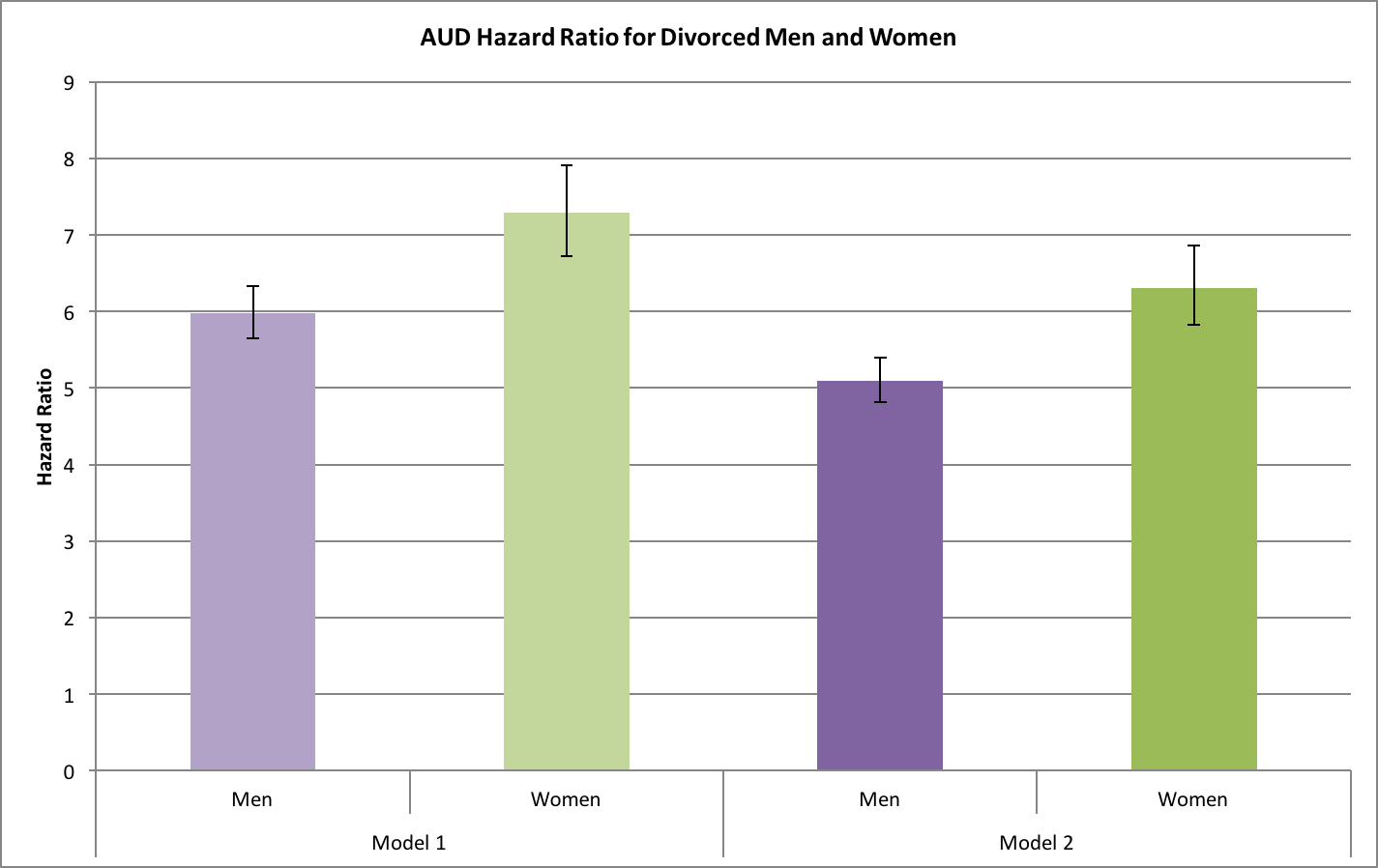While the rate of divorce in the US has decreased over the last 20 years, there were over 800,000 divorces in 2014 alone. Previous epidemiological studies have shown an association between divorce and increased alcohol use and risk for alcohol use disorder (AUD), but the nature of this relationship is not well understood. Many of the factors that predict alcohol use disorders may also influence divorce. Understanding how divorce impacts risk for AUD could help clinicians provide care or preventative services for those who are particularly vulnerable. Today The DRAM reviews a longitudinal study by Dr. Kenneth Kendler and his colleagues examining divorce and AUD onset.
What was the research question?
How does divorce impact risk for AUD, and do these results differ between men and women?
What did the researchers do?
The sample for this study included individuals born in Sweden between 1960 and 1990, who were married during 1990 or later, and did not have a record of AUD diagnosis before their marriage (N = 942,366). Kendler and his colleagues used national registry information to identify divorce, and used medical records, criminal records, and pharmacy registries to identify AUD diagnosis and onset.
What did they find?
Between 1990 and 2008, 16% of men and 17% of women in the sample had gotten divorced. During this same time period, 1.1% of men and 0.5% of women developed an AUD. Men and women who experienced divorce had a 5.98 and a 7.29 times greater risk of developing alcohol use disorder respectively, than their married counterparts (see Figure, Model 1). When researchers controlled for family history of AUD, low parental education, and prior criminal behavior, this risk decreased, but did not disappear (see Figure, Model 2). In other words, these risk factors did not explain away the link divorce and AUD. For men and women with a future divorce, the rate of AUD onset increased in the few years prior to, and the year of, divorce, and remained high in following years. Remarriage after a divorce resulted in decreased risk for alcohol use disorder.

Figure. Hazard ratios for risk of AUD onset for divorced men and women. Model 1 did not control for any potential confounding factors. Model 2 calculated hazard ratios after controlling for a family history of AUD, low parental education, and prior criminal behavior. Click image to enlarge.
Why do these findings matter?
The persistent increased risk of AUD onset in the 15 years following a divorce might suggest that spousal relationships are protective against AUD and that loss of this relationship is a considerable risk factor for developing AUD. Therefore, it might be advisable for medical professionals and mental health clinicians to prioritize providing AUD prevention and screening resources to clients experiencing divorce or other kinds of relationship loss.
Every study has limitations. What were the limitations in this study?
Researchers had to rely on registry data, and therefore were limited in the variables they could consider. This means that there might be other variables that increase risk for both divorce and AUD onset, explaining the relationship between the two. The prevalence of AUD in this sample is lower than that of previous epidemiological studies, which might indicate that this study captured a different picture of AUD in Sweden than previous studies. Additionally, since same sex marriage was not legalized in Sweden until 2009, these results might not be applicable to same-sex marriages.
For more information:
Find the original publication abstract here.
For a guide to accessing treatment for alcohol use, click here.
If you are worried you or a loved one has a drinking problem, visit our website for the First Step to Change: Drinking, a free, anonymous toolkit.
— Layne Keating
What do you think? Please use the comment link below to provide feedback on this article.




